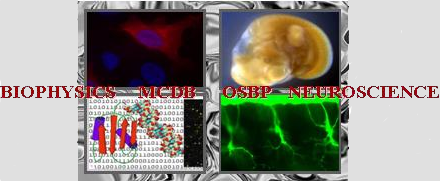Poster abstracts
Poster number 47 submitted by Gabriela Wandling
SEMA7a deletion disrupts innervation but not root elongation in developing molars
Gabriela Wandling (Neuroscience Graduate Program), Siya Chhibber (Division of Biosciences, College of Dentistry, Ohio State University), Aashi Sharma (Division of Biosciences, College of Dentistry, Ohio State University), Monica Stanwick (Division of Biosciences, College of Dentistry, Ohio State University), Sarah B. Peters (Division of Biosciences, College of Dentistry, Ohio State University)
Abstract:
Dental pulp sensory and sympathetic innervation is critical for tooth root development and long-term vitality. We recently demonstrated that crosstalk between dental pulp mesenchyme and sensory afferents helps regulate tooth mineralization and innervation using a mouse model of conditional Tgfbr2 deletion in Osterix+ cells (Tgfbr2cko)1. These mice also demonstrated stunted root growth coincident with reduced Semaphorin7a (SEMA7a) expression in dental pulp odontoblasts, cells responsible for dentin mineralization. Semaphorin proteins are known to participate in mineralized tissue development and homeostasis, and SEMA7a is the only semaphorin that promotes axonal outgrowth2. In this study, we hypothesized that SEMA7a deletion would result in altered tooth morphology, including reduced dentin mineralization, root elongation, and pulp innervation.
Mandibles were collected from WT and Sema7a-/- mouse pups at postnatal day 4 (P4), P10 and P21, time points that represent the initiation, continuation, and completion of root development in first molars. We then analyzed gross morphology using hematoxylin and eosin staining on P4 and P10 mandibles. We also performed immunofluorescence staining on first molars to assess tooth innervation and vascularization.
Counter to our hypothesis, global deletion of axon guidance protein SEMA7a did not recapitulate the short-root or hypomineralization phenotypes observed in Tgfbr2cko mice at P4, P10, or P21. Intriguingly, while WT and Sema7a-/- molars had similar innervation and vascularization at P4 and P10, Peripherin, an intermediate filament protein expressed in peripheral nerve fibers, was reduced in the crowns of Sema7a-/- molars by P21. Because intermediate filaments support neuronal function and structural integrity, we are currently investigating the significance of altered Peripherin expression in Sema7a-/- juvenile molars and its impact on later stages of tooth maturation and repair after injury.
References:
1. Stanwick, M., Barkley, C., Serra, R., Kruggel, A., Webb, A., Zhao, Y., Pietrzak, M., Ashman, C., Staats, A., Shahid, S., & Peters, S. B. (2022).Tgfbr2in Dental Pulp Cells Guides Neurite Outgrowth in Developing Teeth.Frontiers in cell and developmental biology,10, 834815.
2. Pasterkamp, R. J., Peschon, J. J., Spriggs, M. K., & Kolodkin, A. L. (2003). Semaphorin7A promotes axon outgrowth through integrinsand MAPKs.Nature,424(6947), 398–405.
Keywords: Axon guidance, Semaphorins, Mineralization
